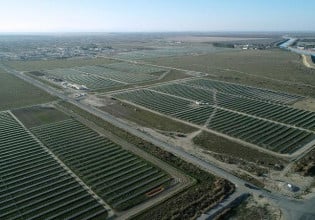The U.S. Department of Energy (DOE) announced the investment of up to $6.4 million, including $4.6 million from the American Recovery and Reinvestment Act, for four projects designed to advance research and development of next generation high-efficiency lighting. The selections announced are part of DOE’s continuing work to accelerate progress toward creating a United States-led market for high-efficiency solid-state lighting sources that save more energy, reduce costs, and have less environmental impact than conventional light sources.
The selections are being made in response to the Department’s solicitation to national laboratories for Solid-State Lighting (SSL) Core Technology Research. With a potential tenfold improvement over standard incandescent lamps, these selections focus on improving the efficiency and quality of solid-state white light sources. By leveraging the scientific resources of the DOE national laboratories, several technology barriers will be addressed to advance SSL toward its full potential. These selections are expected to fill key technology gaps in both light emitting diode (LED) and organic light emitting diode (OLED) technologies. These awards also represent a significant advancement in the SSL technology base, with results that can be applied to existing and future lighting products that are energy efficient and cost-effective
National Renewable Energy Laboratory (NREL) will seek to demonstrate the viability of high bandgap gallium indium phosphide alloys for synthesis of inexpensive, efficient green LED devices. NREL will receive $1.8 million in funding from the American Recovery and Reinvestment Act.
Pacific Northwest National Laboratory (PNNL) seek to develop new, stable materials for high-efficiency blue OLEDs. PNNL will receive $1.0 million in funding from the American Recovery and Reinvestment Act.
Sandia National Laboratories (SNL) seeks to improve the efficiency of green LEDs by growing on gallium nitride substrates. Sandia will receive $1.8 million in funding from the American Recovery and Reinvestment Act.
U.S. ARMY Research Laboratory (ARL) seeks to exploit the negative polarization charge at the active region to achieve efficient green LEDs. ARL will receive $1.8 million from appropriated program funds.






